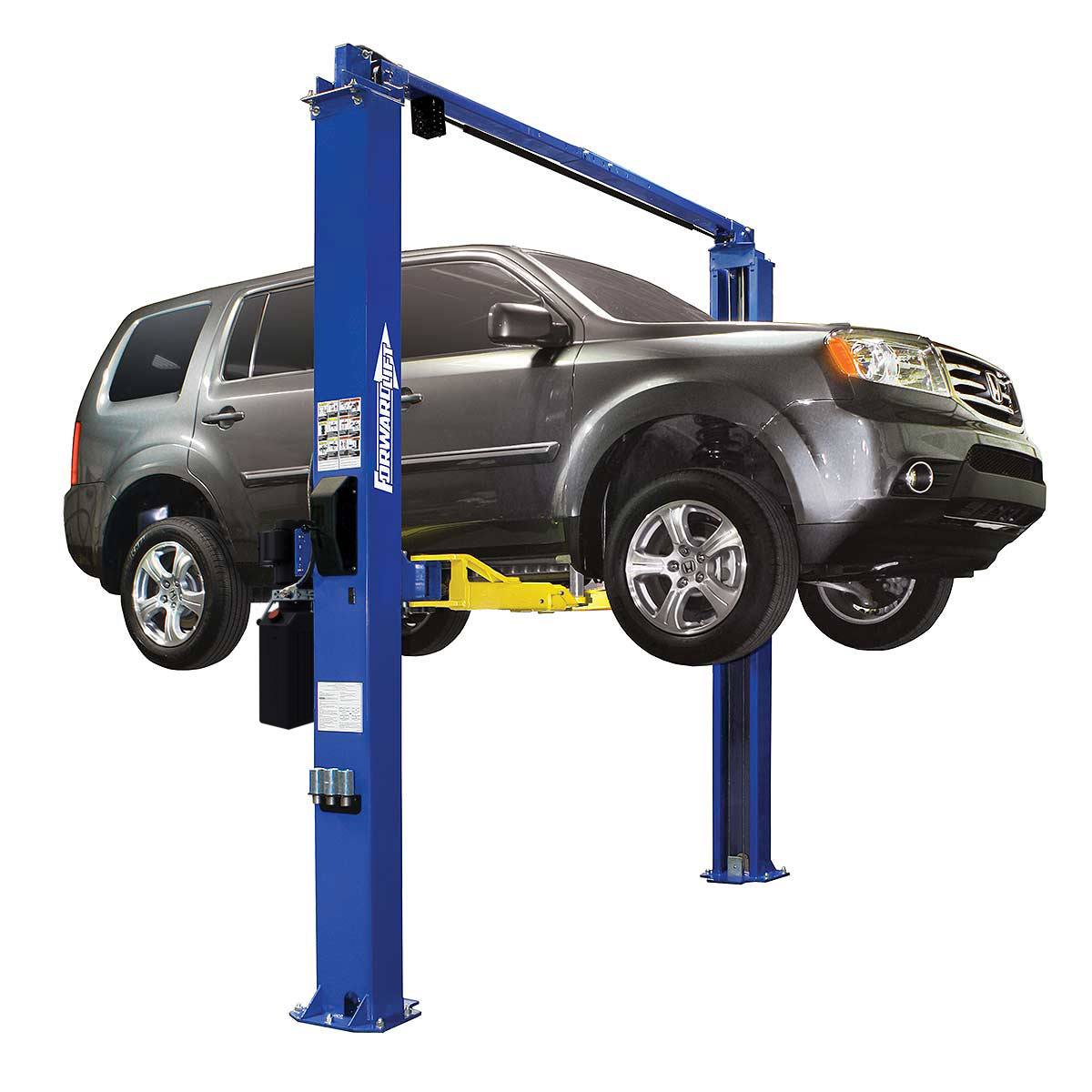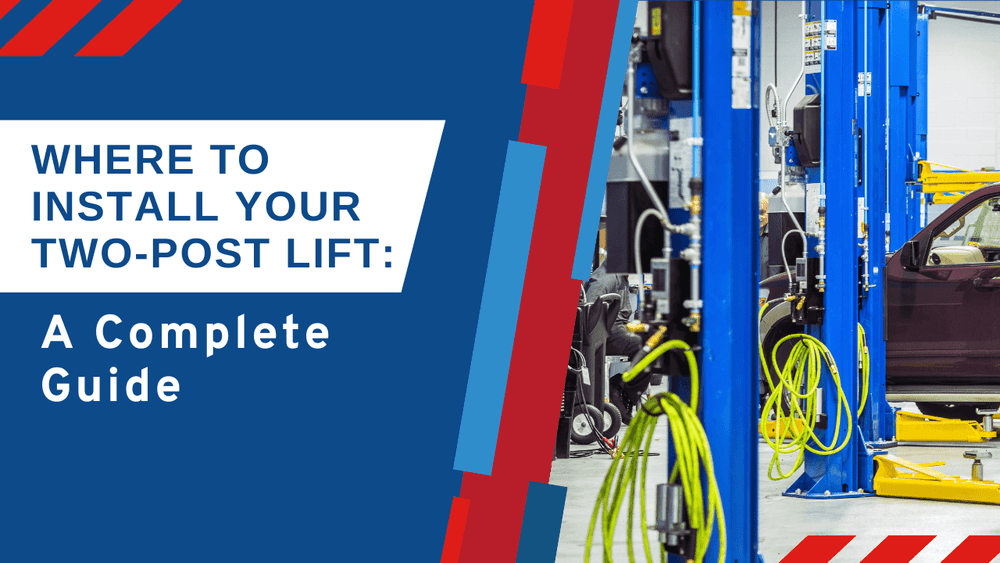Where to Install Your Two-Post Lift: A Complete Guide
Posted by JMC Team on 15th Feb 2023
One of the most common questions we receive from customers is about the best place to mount their two-post lift. Unfortunately, there is no one-size-fits-all answer since the location will depend on various factors such as garage space, ceiling height, and space in front of and behind the columns. However, you should consider a few things to determine the best spot for your lift.

The only restrictions if you have unlimited garage space are the correct ceiling height and adequate space around the columns. On the other hand, if you have limited floor space, you'll need to be more strategic with where you place your lift. In this case, we suggest standing the columns up temporarily in the area where you want your lift to be and walking around the lift area to see if it meets your needs before anchoring the columns in position.
How far from the front wall should I put the columns?
The distance between the front wall and the columns depends on the type of arms on your lift. If your lift has asymmetric arms, the center of the columns should be about 9–10 feet from the front wall. The center should be about 12 feet from the front wall if it has symmetric arms. If it has Atlas-exclusive super-symmetric or versa-metric arms (found on the Atlas PV-10P), the center should be about 10 feet from the front wall. The versatility of these arms allows the customer to adjust the vehicle’s position, making it easier to walk around the front or back of it.
If the vehicle is asymmetrically positioned on the lift, 30% will be in front of the columns and 70% will be to the rear of the columns. If the lift bay is 25 feet long and the vehicle is 18 feet long, the front part of the vehicle will be about 4-5 feet in front of the columns. If the columns are 9 feet from the front wall, there will be about 4 feet of space between the hood of the car and the front wall. If the vehicle is symmetrically positioned, 50% will be in front of the lift and 50% will be behind the column. In this case, if the vehicle is 18 feet long, there will be about 3 feet between the front of the vehicle and the front wall.
Considerations for Space and Safety
There are some important factors to keep in mind when deciding where to place your lift, such as the length of the vehicle, weight, and equipment. If your service bay is 25 feet long and you're lifting a dually crew cab with an eight-foot bed (a total length of 23 feet), you will only have one foot of space on either end of the truck. If you weigh over 500 lbs. and have a waist size of 67, the three feet of space in front of the columns may not be adequate. If you have a $20,000 toolbox that is the size of a small home, you'll need additional space between the front of the vehicle and the front wall.
We recommend temporarily standing the columns up in your bay and driving the longest vehicle you think you'll lift into position to see if it allows the lift arms to reach the correct lifting points and still leaves enough room to maneuver. This will give you a better idea of what size vehicles you'll be able to lift safely.
Cracks in the Concrete: Will They Affect the Stability of My Lift?
Cracks in concrete come in all sizes, and it's important to use common sense to determine whether they will affect the stability of your lift. Your lift will be fine if the concrete is 4 inches deep with 3000 PSI integrity.
What factors must I consider before installing a 2-post lift?

Installing a 2-post lift in your garage or service bay can be a great investment. It provides a safe and convenient way to lift and service vehicles. However, choosing the right place to mount your lift is essential. With limited floor space, it is important to consider the available space, ceiling height, and the size of the vehicles you will be lifting.
One important factor to consider is the distance from the front wall. If your lift has asymmetric arms, the center of the columns should be set about 9–10 feet off the front wall. If your lift has symmetric arms, then the center of the columns should be about 12 feet off the front wall. For lifts with super-symmetric or versa-metric arms, the center of the columns should be installed about 10 feet from the front wall.
It is recommended to stand the columns up in your bay and position the longest vehicle you plan to lift between the columns to ensure that you have enough room to maneuver. Keep in mind the size of your service bay, the length of your vehicles, and the size of any additional equipment you may have, such as a toolbox or a larger waist size.
Another factor to consider is the quality and stability of the concrete floor. Most 2-post lifts require 4-inch-deep concrete with 3000 PSI integrity. If you have cracks or other imperfections in your concrete, it may not be suitable to install the lift. You can pour a new concrete pad or use epoxy to secure the bolts in place. When drilling the holes and tightening the nuts, you will know whether the bolts are holding.
Finally, the proximity to the edge of the concrete is an important factor to consider. Drilling too close to the edge can cause the concrete to break apart, so it is important to take the thickness and structure of the concrete into account.
Closing Thoughts
In conclusion, choosing the right place to mount your 2-post lift requires careful consideration of several factors. It is important to assess your available space, the stability of your concrete floor, and the size of your vehicles and equipment. When in doubt, let common sense prevail, and make sure you have enough room to maneuver safely.

